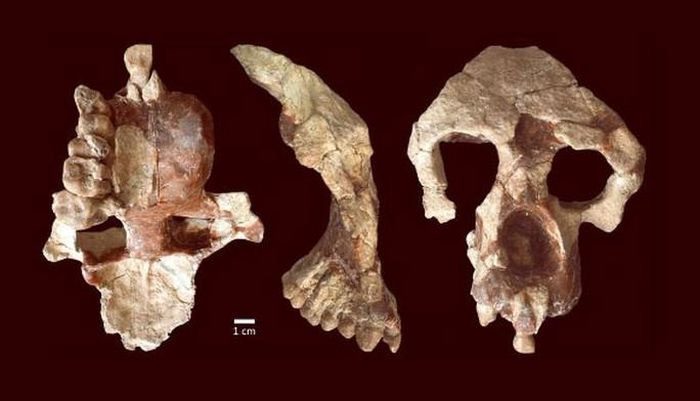The traditional view of human origins, dating back to the time of scientist Charles Darwin, may be challenged by the recent discovery of a common ancestor’s remains in Europe.
According to Sci-News, scientists have unearthed 8.7 million-year-old remains of Anadoluvius turkae, a newly identified species considered a common ancestor of humans and several other primate species.
What is shocking is that these remains were discovered in Turkey. This is in stark contrast to the traditional theory that the human lineage diverged from the common family tree with chimpanzees, evolving to the point of tool use before leaving their homeland in Africa.

Skull of Anadoluvius turkae excavated in Turkey – (Photo: Velizar Simeonovski)
This new finding suggests that the distant history of our ancestors may involve a complex series of overlapping migrations.
Anadoluvius turkae still resembles a gibbon, but the fossilized skull found—comprising most of the facial structure and the front part of the braincase—indicates it had a significantly larger brain than previously discovered ancestral species.
This creature was roughly the size of a large male chimpanzee (about 50-60 kg), living in a dry forest environment and likely spending considerable time on the ground.
Previously, scientists believed that the ability to move flexibly on two legs and to live and forage partially on the ground developed millions of years later, with hominids that were more human-like.
“We do not have limb bones, but based on the jaw and teeth, the animals found alongside it, and the geological indicators of the environment, Anadoluvius turkae likely lived in relatively open conditions, unlike the forest environment of larger ape species,” stated Professor David Begun, a paleoanthropologist from the University of Toronto (Canada).
The study published in the scientific journal Communication Biology has redefined a surprising historical narrative indicated by these remains: Hominids may have undergone 5 million years of evolution in Europe before dispersing into Africa, possibly due to environmental changes and diminishing forest areas.
The research also indicates that the Mediterranean ecological community—comprising giraffes, rhinoceroses, antelopes, zebras, elephants, hyenas, lion-like carnivores… and most recently, the lineage of human ancestors—spread into Africa around 8 million years ago.
The authors are actively seeking additional fossils from Europe and Africa dating back 7 to 8 million years to establish a more comprehensive relationship.





















































